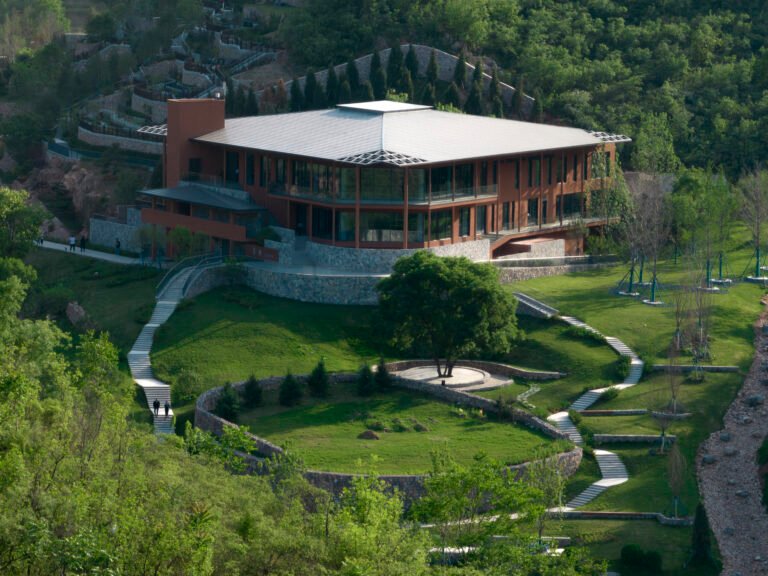olson kundig weaves together the complex life and work of bob dylan in tulsa
olson kundig in tulsa, oklahoma
Olson Kundig celebrates the completion of the Bob Dylan Center, a project combining immersive exhibition design and restoration all spanning a whole block in Tulsa, Oklahoma. The space occupies a 100 year-old building that was once a paper factory, a context which plays a great role in the all-American spirit of the project.
This was an international design competition which partners Alan Maskin and Tom Kundig pursued jointly — it proved to be the perfect match as Olson Kundig is one of the few firms in the world that specializes in both architecture and exhibit design. Actually this wasn’t the team’s first proposal. The original design proposed an entirely new building which fused the exhibits with newly built architecture. Shortly after the group was awarded the project five years ago, the warehouse space — a former gallery adjacent to the Woody Guthrie Center — had become available and a new piece of architecture was not needed. Since that moment, the team focused entirely on exhibit design.
In the early stages of the process, it was announced that Bob Dylan himself — who is just celebrating his 81st birthday this Tuesday, May 24th — would not be involved in the project. ‘I was actually incredibly relieved,’ Alan Maskin told designboom, ‘because I didn’t want to make a monument to a rock star. I wanted to use the example of his life and career and his creative trajectory as an example for others.’
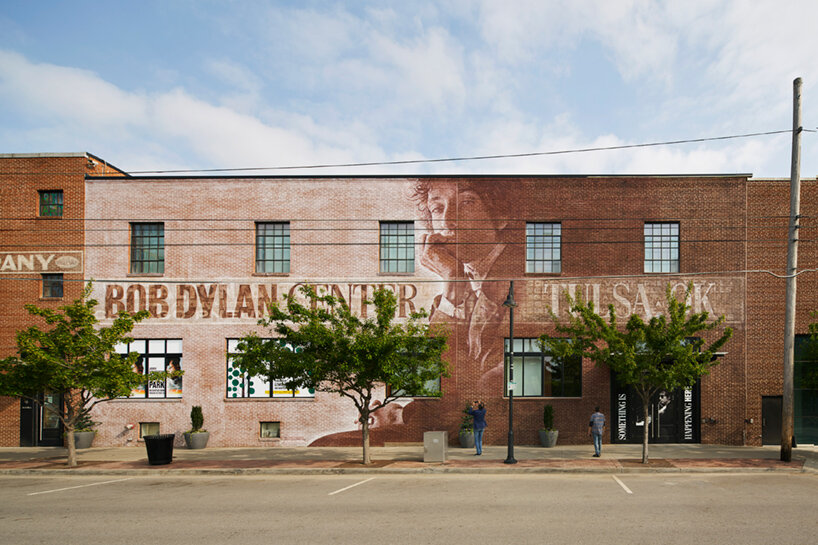 images © Matthew Millman | @matthewmillmanphoto
images © Matthew Millman | @matthewmillmanphoto
telling the story of bob dylan
The team at Olson Kundig (see more here) shapes its newly completed Bob Dylan Center (see here) as a space where visitors in Tulsa can learn from the experience of the iconic artist’s life. Alan comments, ‘His life is so interesting — it has so many aspects that are adaptable to other people’s lives, and they can extract meaning out of it that is uniquely personal to them.’
The project tells the story of Bob Dylan through one hundred thousand archived objects — some items that have yet to be seen by the public and that few had known even existed — acquired by the George Kaiser Family Foundation (see here). The archive and exhibition, designed together with 59 Productions, illustrates Dylan’s creative process. Handwritten or typed manuscripts show little care for spelling, lines which are crossed-out and revised and dotted with stains.
Even with such a massive and personal archive, Alan Maskin explains the challenges of depicting the truth of such an enigmatic artist: ‘He resisted in every interview explaining himself. He made things up — the state he came from, his birth name — he gave alternative stories to the true ones and he believed both were relevant.’ This concept has been illustrated through films including ‘Rolling Thunder Revue: A Bob Dylan Story by Martin Scorsese,’ a story which blurs fiction and reality, and ‘I’m Not There,’ a depiction of Dylan’s life through the lens of six actors of diverse genders, races, and ages who together offer a sense of who he was. The latter film echoes the style of Akira Kurosawa’s ‘Rashomon’ which similarly weaves a complete story from multiple perspectives.
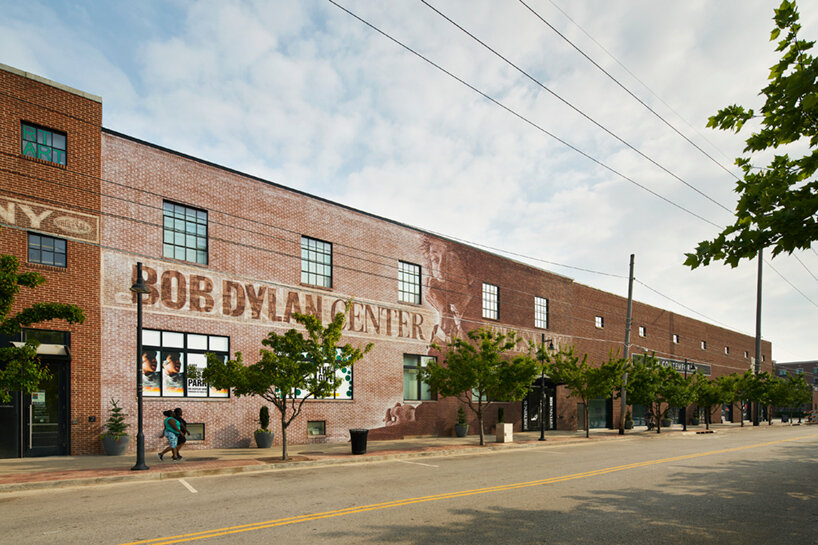
the large-scale façade mural depicts a rare 1965 image of Dylan donated by photographer Jerry Schatzberg
the bob dylan center: inside and out
Although Olson Kundig preserves the historic spirit of the brick warehouse, the Bob Dylan Center stands out along the Tulsa street with a massive facade mural. The large-scale portrait was painted by Erik T. Burke (see more here) who referenced a rare 1965 photo which photographer Jerry Schatzberg donated to the center. Alan Maskin notes the artist’s process: ‘With only an 8.5″ x 11″ photo and a can of spray paint, he made that enormous facade mural.’
Inside, the exhibition was designed for a range of visitors which the team calls ‘Skimmers, Swimmers, and Divers.’ Maskin explains: ‘The skimmers move through really quickly with an almost superficial experience. The swimmers may know a few well-known songs by Dylan and are drawn to certain things, they stay for about an hour. The divers are the ‘Dylanologists’ and know more about Bob Dylan than anyone. We needed to show them things they had never seen or known existed.’
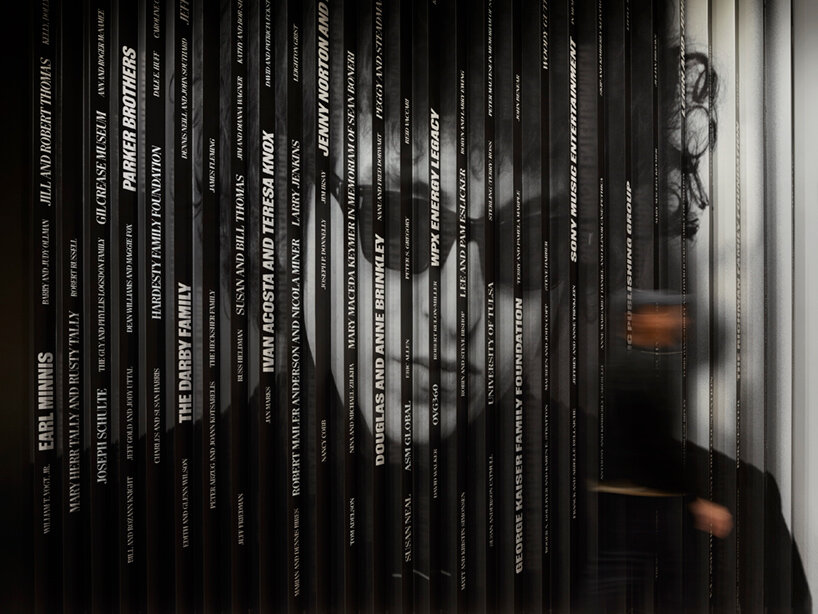
a ‘donor board’ lists the donors behind an image of the artist
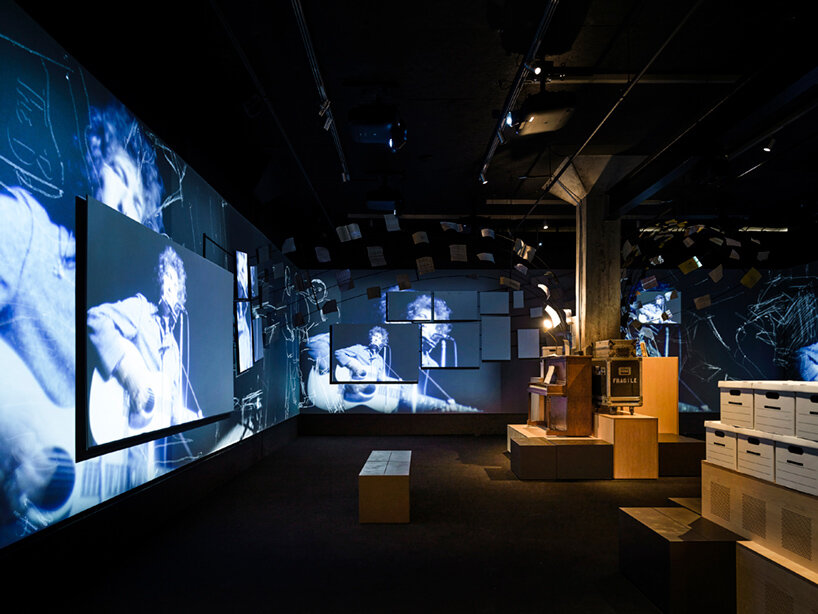
view of the exhibition space
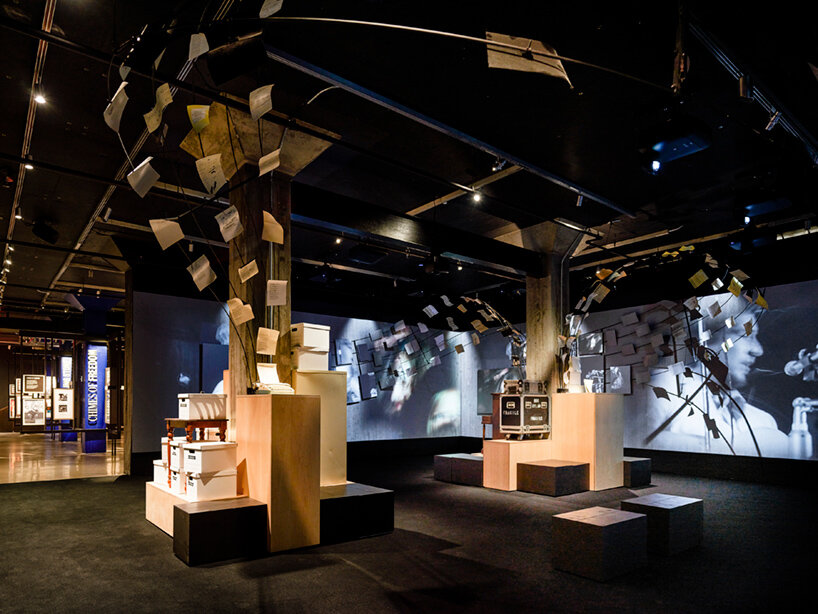 an archive of manuscripts ‘explodes’ from boxes
an archive of manuscripts ‘explodes’ from boxes

